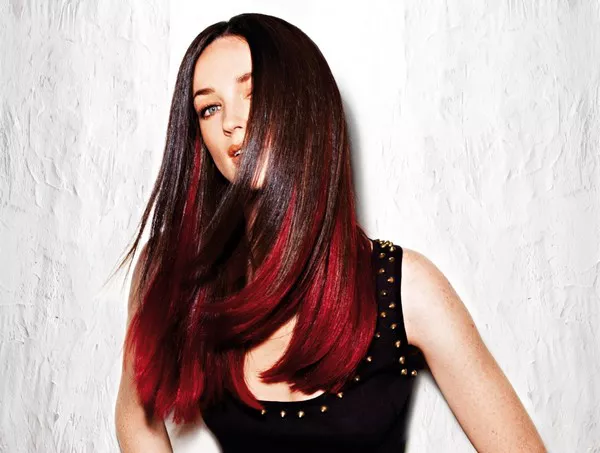Balayage and ombre hair dye techniques have taken the world of hair coloring by storm, offering a seamless and natural-looking way to add dimension, depth, and style to your locks. Whether you’re seeking subtle sun-kissed highlights or a striking gradient effect, these techniques provide endless possibilities for creating a personalized and stunning look. In this comprehensive guide, we’ll delve into the intricacies of balayage and ombre hair dye techniques, exploring the differences between them, the benefits they offer, and how to maintain these beautiful styles.
I. Balayage Hair Dye Technique
Balayage is a French word that translates to “sweeping” or “painting.” True to its name, the balayage technique involves hand-painting hair color onto specific sections of your hair, typically the mid-lengths and ends. The result is a natural and sun-kissed effect that grows out beautifully, as there are no harsh lines or obvious regrowth. Here are the key features and benefits of balayage:
Subtle Gradation: Balayage creates a subtle gradation from your natural hair color to the chosen shade. This soft transition enhances the natural beauty of your hair and complements your skin tone.
Low Maintenance: One of the primary advantages of balayage is its low maintenance. Since there are no distinct roots or lines, you can go longer between touch-up appointments without compromising the look.
Customizable: Balayage is highly customizable, allowing you to choose the degree of lightening or color contrast. You can opt for a soft, natural look or a more dramatic effect, depending on your preference.
Versatile Shades: Balayage can be applied with various shades, from classic blondes and caramels to bold pastels and vibrant hues. This versatility ensures that there’s a balayage style to suit everyone.
II. Ombre Hair Dye Technique
Ombre is a French word that means “shaded” or “gradation.” Unlike balayage, which focuses on subtle transitions within the same color family, ombre creates a more noticeable contrast by blending two distinct colors. The darker shade is typically at the roots, gradually transitioning to a lighter shade towards the ends. Here are the key features and benefits of ombre:
Dramatic Contrast: Ombre creates a striking contrast between the darker roots and the lighter ends, making it a bold and eye-catching choice.
Unique Style: Ombre allows you to experiment with unique color combinations, such as dark brown to platinum blonde or black to vibrant red. It’s an excellent choice for those who want to make a statement.
Expression of Personality: Ombre offers a creative canvas for self-expression, enabling you to showcase your personality through your hair. Whether you prefer a subtle or dramatic ombre, it can reflect your individual style.
Grows Out Gracefully: Similar to balayage, ombre grows out gracefully. The roots blend naturally into the darker shade, so you won’t be left with an obvious line of regrowth.
III. Balayage vs. Ombre: Which is Right for You?
The choice between balayage and ombre ultimately comes down to your personal style, maintenance preferences, and desired level of contrast. Balayage is ideal for those seeking a more subtle and low-maintenance look, while ombre is perfect for individuals who want to embrace a bolder and more noticeable color transition. Consulting with a professional colorist can help you determine which technique suits you best.
IV. Maintaining Balayage and Ombre Styles
Maintaining the beauty of your balayage or ombre style requires proper care and attention. Here are some essential tips:
Use Color-Safe Products: Invest in color-safe shampoos and conditioners to preserve the vibrancy of your chosen shades.
Avoid Over-Shampooing: Washing your hair too frequently can cause color fading. Try to limit shampooing to every two to three days.
Protect from Heat: Use heat protectant products before using styling tools like curling irons or straighteners to prevent color damage.
Regular Touch-Ups: Schedule regular touch-up appointments with your colorist to maintain the integrity of your balayage or ombre.
Deep Conditioning: Incorporate deep conditioning treatments into your hair care routine to keep your locks nourished and healthy.
Sun Protection: Use hair products with UV protection when spending time in the sun to prevent color fading.
FAQs on Balayage and Ombre Hair Dye Techniques
1. Can I achieve balayage or ombre at home, or should I visit a salon?
Achieving a professional-looking balayage or ombre is often best done at a salon by an experienced colorist. These techniques require skill and expertise to ensure seamless blending and color accuracy.
2. How long does balayage or ombre hair typically last?
The longevity of balayage or ombre hair depends on factors like your hair’s natural growth rate and the care you provide. On average, these styles can last anywhere from six weeks to several months before requiring a touch-up.
3. Will balayage or ombre hair damage my hair?
When done correctly by a professional, balayage and ombre techniques should not cause significant damage to your hair. However, any hair color process involves some degree of chemical treatment, so proper aftercare is essential to maintain hair health.
4. Can I transition from balayage to ombre or vice versa?
Yes, it’s possible to transition from balayage to ombre or vice versa, although it may require some adjustment by a skilled colorist. Changing your color style can be a fun way to switch up your look while maintaining a seamless transition.
5. Are balayage and ombre suitable for all hair types and textures?
Both balayage and ombre can be adapted to suit various hair types and textures. A skilled colorist can tailor the technique to complement your specific hair characteristics and desired outcome.

